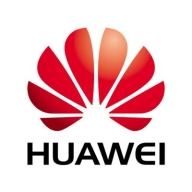

Microsoft Configuration Manager and Huawei iBMC are competing in IT management and infrastructure. Microsoft Configuration Manager is favored for integration in Microsoft environments.
Features: Microsoft Configuration Manager supports software distribution, offers configuration updates, and ensures compliance settings. Huawei iBMC provides server health monitoring, power consumption control, and remote management.
Ease of Deployment and Customer Service: Microsoft Configuration Manager is integrated with Windows, simplifying deployment. Customer service is well-regarded. Huawei iBMC requires hardware knowledge, useful for hardware monitoring, and offers reliable service support.
Pricing and ROI: Microsoft Configuration Manager has higher licensing costs but higher ROI for software management. Huawei iBMC has lower initial costs, yielding higher ROI for hardware-focused operations.
| Product | Market Share (%) |
|---|---|
| Microsoft Configuration Manager | 5.1% |
| Huawei iBMC | 0.9% |
| Other | 94.0% |

| Company Size | Count |
|---|---|
| Small Business | 20 |
| Midsize Enterprise | 13 |
| Large Enterprise | 64 |
The core of server management, iBMC, uses the Hi1710 BMC chip developed by Huawei to provide refined management and control for servers. iBMC adopts multiple innovative technologies and maximizes RAS features — all to improve server reliability, availability, and serviceability.
Microsoft Configuration Manager streamlines IT management with features such as software deployment, patch management, and automation, centralizing operations for Windows environments. Integration with Microsoft products allows efficient oversight of workstations and servers.
Microsoft Configuration Manager provides comprehensive IT management, offering software deployment, patch management, and application pushing. Automation reduces manual tasks, ensuring consistency across systems. Centralized management enables standardized OS deployments, application updates, and configuration integrity. Integration with Microsoft products facilitates seamless operations, while hardware and software inventory, compliance reporting, and remote control functions enhance IT management. Users seek improvements in application deployment for those without deep scripting knowledge and desire better WSUS control, PowerShell and Intune integration, Linux compatibility, and user interface enhancements. Performance improvements are requested for remote user management and third-party application support.
What features enhance Microsoft Configuration Manager?Microsoft Configuration Manager is widely implemented in organizations to manage Windows workstations and servers. It is essential for deploying operating systems and applications, managing software updates, and conducting hardware and software inventories. The tool is crucial for endpoint and configuration management, ensuring compliance, and automating processes like patching and vulnerability management. Industries such as finance, healthcare, and education rely on Microsoft Configuration Manager to keep systems secure and operational, adapting it to address their specific needs and challenges in maintaining diversified IT environments.
We monitor all Server Monitoring reviews to prevent fraudulent reviews and keep review quality high. We do not post reviews by company employees or direct competitors. We validate each review for authenticity via cross-reference with LinkedIn, and personal follow-up with the reviewer when necessary.